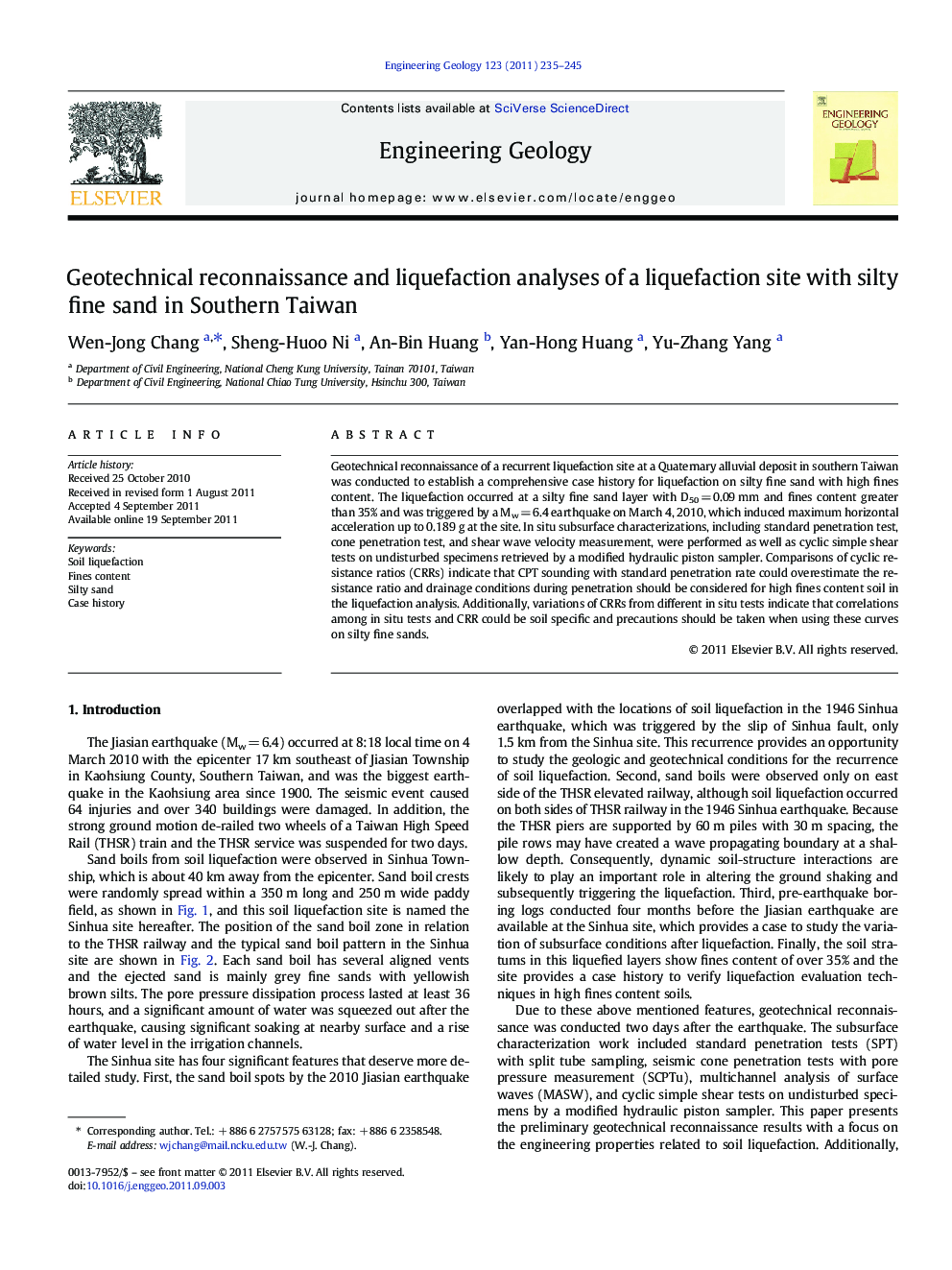| Article ID | Journal | Published Year | Pages | File Type |
|---|---|---|---|---|
| 4744198 | Engineering Geology | 2011 | 11 Pages |
Geotechnical reconnaissance of a recurrent liquefaction site at a Quaternary alluvial deposit in southern Taiwan was conducted to establish a comprehensive case history for liquefaction on silty fine sand with high fines content. The liquefaction occurred at a silty fine sand layer with D50 = 0.09 mm and fines content greater than 35% and was triggered by a Mw = 6.4 earthquake on March 4, 2010, which induced maximum horizontal acceleration up to 0.189 g at the site. In situ subsurface characterizations, including standard penetration test, cone penetration test, and shear wave velocity measurement, were performed as well as cyclic simple shear tests on undisturbed specimens retrieved by a modified hydraulic piston sampler. Comparisons of cyclic resistance ratios (CRRs) indicate that CPT sounding with standard penetration rate could overestimate the resistance ratio and drainage conditions during penetration should be considered for high fines content soil in the liquefaction analysis. Additionally, variations of CRRs from different in situ tests indicate that correlations among in situ tests and CRR could be soil specific and precautions should be taken when using these curves on silty fine sands.
► Comprehensive case history of a recurrent liquefaction site consisted of silty fine sand. ► In situ subsurface characterizations and dynamic tests on undisturbed specimens were performed and compared. ► Drainage conditions of CPT soundings should be considered for high fines content soil in liquefaction analysis. ► Semi-empirical CRR correlations could be soil specific on silty fine sands.
